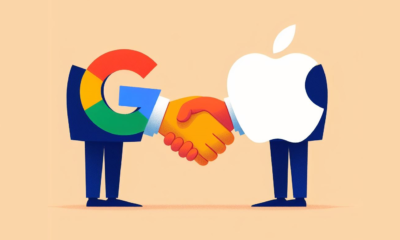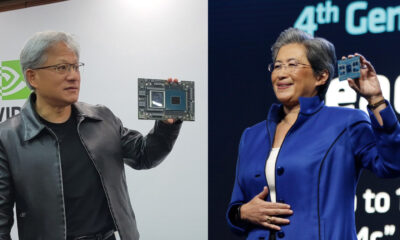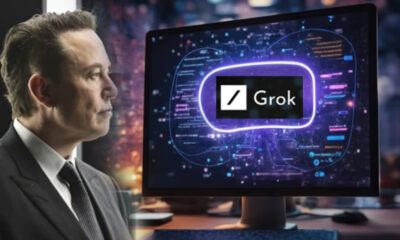AI
Europe takes the lead in establishing AI regulations

According to AP, the strong development of Artificial Intelligence has sparked a frenzy among users in music composition, image creation, and writing essays. However, Artificial Intelligence is also causing concern in the community about its consequences.
In an endeavor to govern this emerging technology, the European Union (EU) is actively working towards establishing regulations. Two years ago, the bloc of 27 countries introduced its initial set of regulations concerning Artificial Intelligence , with a primary focus on mitigating the risks associated with AI applications, albeit with limited coverage. Notably, advanced AI chatbots received minimal attention during that period.
Dragos Tudorache, a Romanian member of the European Parliament who leads the efforts to establish AI regulations, said: “Then, ChatGPT exploded. If there were still some people doubting whether we needed AI regulations or not, I think that doubt quickly disappeared.”
The introduction of ChatGPT last year garnered global attention, primarily due to its remarkable capacity to generate human-like responses, thanks to its extensive dataset.
Responding to mounting apprehensions surrounding this matter, European lawmakers swiftly incorporated provisions specifically addressing AI systems as they diligently refined their legislation.
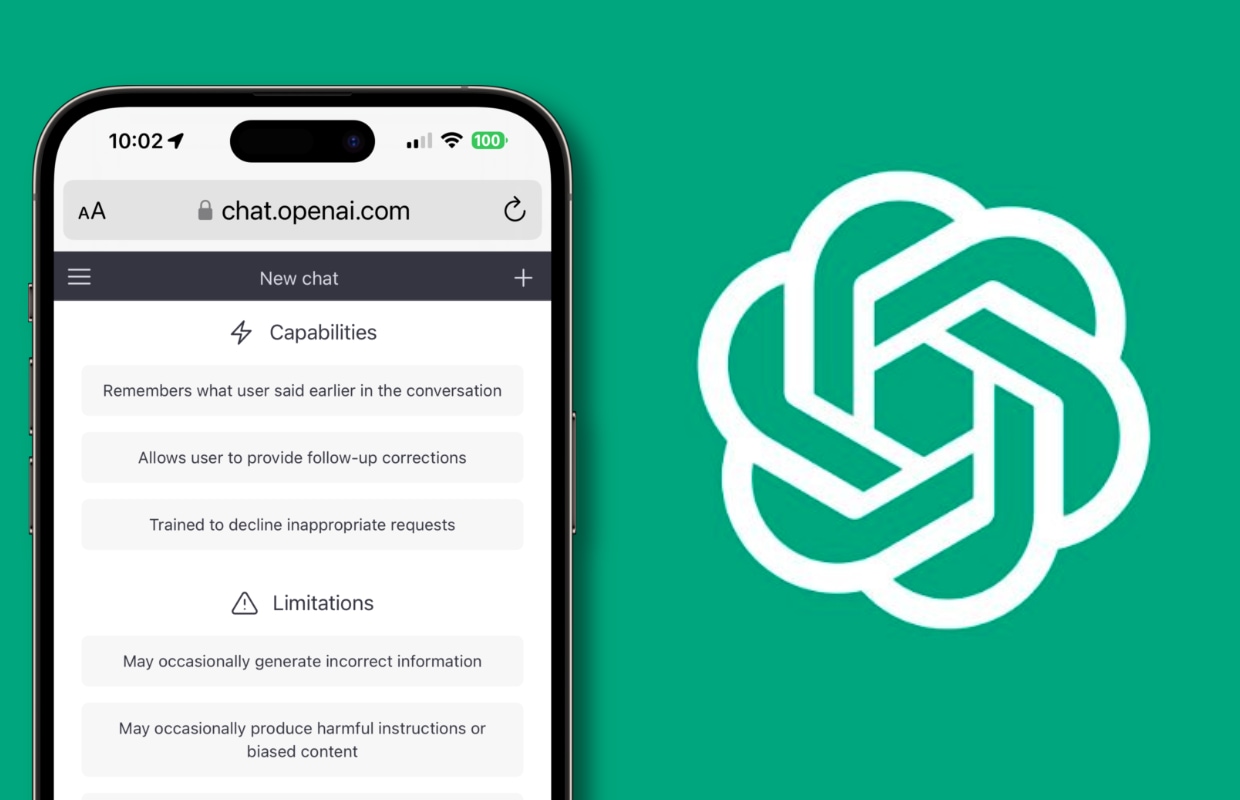
The EU’s AI law could become a global standard for the development of artificial intelligence. Sarah Chander, a senior policy advisor at the digital rights group EDRi, said: “Europe is the first bloc to try to regulate AI strongly. It’s a big challenge when considering what AI can encompass.” The EU’s wide-ranging regulations on AI, which are expected to bind all providers of AI services and products, are on track to be passed by a body of the European Parliament on Thursday. After approval by this body, the draft will be sent for discussion among the EU’s 27 member states, Parliament, and the EU’s executive committee.
Concerns about AI are global.
Global authorities are actively seeking means to exert control over Artificial Intelligence in order to ensure that this technology enhances people’s lives without compromising their rights or safety. Regulators are particularly apprehensive about the emerging ethical and social risks associated with AI systems like ChatGPT, as they have the potential to significantly impact various aspects of everyday life, including work, education, copyright, and privacy concerns.
In recent developments, the White House extended invitations to senior executives from leading AI technology companies such as Microsoft, Google, and the creators of ChatGPT, OpenAI, to engage in discussions regarding these risks. Additionally, the US Federal Trade Commission issued a warning, making it clear that they will not hesitate to take strict action against any misconduct or misuse of AI technology.
China has taken a step forward by issuing a draft regulation that mandates a security assessment for any product utilizing AI systems akin to ChatGPT. In the UK, the competition watchdog has initiated an evaluation of the AI market, while Italy has imposed a temporary ban on ChatGPT due to privacy rights violations.
The development of AI has also prompted apprehension among prominent figures in the technology realm. Renowned tech leaders like Elon Musk and Apple co-founder Steve Wozniak have advocated for a six-month pause in the AI development process to thoroughly contemplate the associated risks.
Last week, prominent computer scientist Geoffrey Hinton and AI pioneer Yoshua Bengio raised concerns about the perils associated with unrestricted AI development. Their statements highlighted the importance of addressing the potential risks and implications of AI technology.
Mr. Tudorache stated that such warnings demonstrate that the EU’s move to begin building AI regulations from 2021 is “a rightful action.“
Concerned with protecting the rights and privacy of users.
Recent additions to the EU’s AI Act will require “foundational” AI models like Chat GPT to disclose the copyrighted materials they used in the data collection process for Chat GPT, according to a recent draft law accessed by AP.
Foundational models, also known as large language models, are a small area of AI development. Their algorithms are built from a vast online information repository, such as blog posts, e-books, scientific papers, or a catalog of songs.
Mr. Tudorache stated: “Significant effort is required to store copyrighted materials that have been used in the process of building algorithms.” This will enable artists, writers, and other content creators to find ways to cope.
The EU adopts a risk-based approach where stringent control measures are implemented for the use of Artificial Intelligence that poses threats to individual safety or rights.
In line with this approach, the EU is expected to impose a ban on remote facial recognition. Furthermore, the practice of scanning random photos from the internet for the purpose of biometric matching and facial recognition is strongly discouraged.
The utilization of psycho-predictive practices and emotion recognition technology, except in cases of treatment or healthcare, will be significantly curtailed under the new regulations. Violations of these restrictions can lead to fines of up to 6% of a company’s global annual revenue.
While the EU law has received final approval from all pertinent agencies, it is anticipated that it will not take immediate effect. Instead, it is expected to be implemented no later than the end of this year or early 2024. This timeline allows companies and organizations a transition period to adapt and devise strategies for complying with the new regulations.
Read more about tech news here
Read more about the Artificial Intelligence Act here
AI
Elon Musk’s super AI Grok was created within two months.
The development team of xAI stated that Grok was trained for two months using data from the X platform.
“Grok is still in the early testing phase, and it is the best product we could produce after two months of training,” xAI wrote in the Grok launch announcement on November 5th.
This is one of the AI systems that has been trained in the shortest amount of time. Previously, OpenAI took several years to build large language models (LLMs) before unveiling ChatGPT in November 2022.
xAI also mentioned that Grok utilizes a large language model called Grok-1, which was developed based on the Grok-0 prototype with 33 billion parameters. Grok-0 was built shortly after the company was founded by Elon Musk in July of this year.
With a total time of approximately four months, the company asserts that Grok-1 surpasses popular models like GPT-3.5, which is used for ChatGPT. In scoring benchmarks on mathematical and theoretical standards such as GSM8k, MMLU, and HumanEval, xAI’s model outperforms LLaMa 2 70B, Inflection-1, and GPT-3.5.
For example, in a math problem-solving test based on this year’s Hungarian National High School Math Competition, Grok-1 achieved a score of 59%, higher than GPT-3.5’s score of 41% and only slightly below GPT-4 (68%).
According to xAI, the distinguishing feature of Grok is its “real-time world knowledge” through the X platform. It also claims to answer challenging questions that most other AI systems would reject.

On the launch day, Musk also demonstrated this by asking the question, “the steps to make cocaine.” The chatbot immediately listed the process, although it later clarified that it was just joking.
This is the first product of Musk’s xAI startup, which brings together employees from DeepMind, OpenAI, Google Research, Microsoft Research, Tesla, and researchers from the University of Toronto. Musk is also a co-founder of OpenAI, the organization behind ChatGPT, established in 2015. He later left the company due to disagreements over control. During his departure, he declared his intention to compete for talent from the company while also cutting off the previously promised $1 billion in funding.
Read more: Google, Meta, Microsoft, OpenAI… agree with voluntary measures to protect AI.
AI
AI generation – a new battleground in phone chip design.
Smartphone and mobile chip manufacturers are participating in the wave of AI generation to bring this technology to phones in the near future.
AI generation has exploded over the past year, with a range of applications being released to generate text, images, music, and even versatile assistants. Smartphone and semiconductor companies are also building the latest hardware to not miss out on the wave. Leading the way is Google’s Pixel 8, while Qualcomm’s Snapdragon 8 Gen 3 processor is also set to be launched in the coming days.
The latest signs indicate that phone manufacturers are welcoming AI generation from Google. The Pixel 8 series is the first set of smartphones capable of operating and processing Google’s Foundation Models for AI generation directly on the device without the need for an internet connection. The company stated that the models on the Pixel 8 reduce many dependencies on cloud services, providing increased security and reliability as data is not readily available.
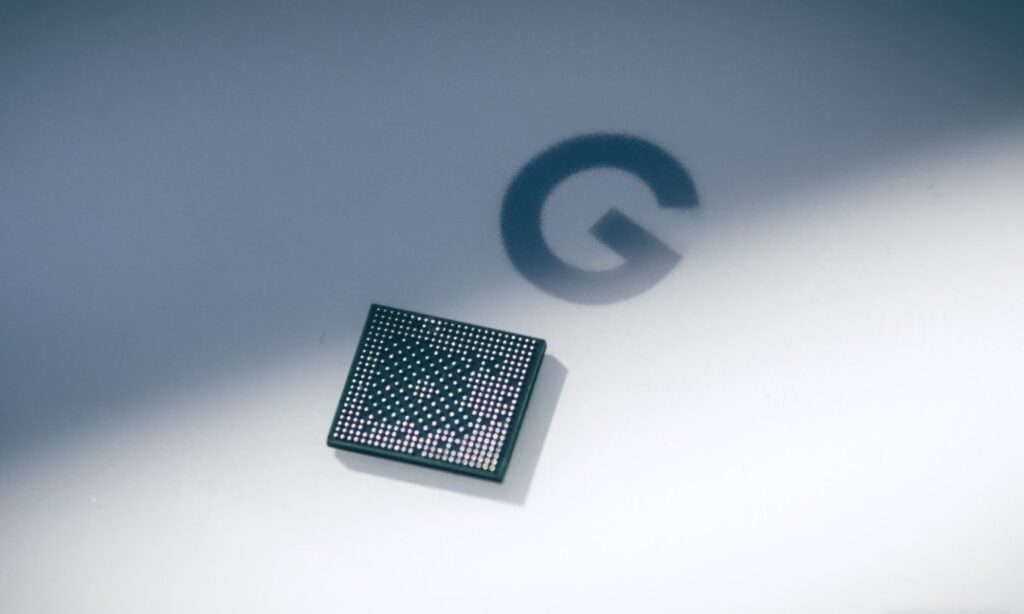
This has become a reality thanks to the Tensor G3 chip, with the Tensor (TPU) processor significantly improving over last year. The company usually keeps the operation of the AI chip secret but has revealed some information, such as the Pixel 8 having double the number of on-device machine learning models compared to the Pixel 6. The AI generation on the Pixel 8 also has the ability to compute 150 times faster than the largest model of the Pixel 7.
Google is not the only phone manufacturer applying AI generation at the hardware level. Earlier this month, Samsung announced the development of the Exynos 2400 chipset with AI computing performance increased by 14.7 times compared to the 2200 series. They are also developing AI tools for their new phone line using the 2400 chip, allowing users to run text-to-image applications directly on the device without an internet connection.
Qualcomm’s Snapdragon chip is the heart of many leading Android smartphones globally, which raises expectations for the AI generation capabilities on the Snapdragon 8 Gen 3 model.
Earlier this year, Qualcomm demonstrated a text-to-image application called Stable Diffusion running on a device using Snapdragon 8 Gen 2. This indicates that image generation support could be a new feature on the Gen 3 chipset, especially since Samsung’s Exynos 2400 also has a similar capability.
Qualcomm Senior Director Karl Whealton stated that upcoming devices can “do almost anything you want” if their hardware is powerful, efficient, and flexible enough. He mentioned that people often consider specific AI generation-related features and question whether the existing hardware can handle them, emphasizing that Qualcomm’s available chipsets are powerful and flexible enough to meet user needs.
Some smartphones with 24 GB of RAM have also been launched this year, signaling their potential for utilizing AI generation models. “I won’t name device manufacturers, but large RAM capacity brings many benefits, including performance improvement. The understanding capability of AI models is often related to the size of the training model,” Whealton said.
AI models are typically loaded and continuously reside in RAM, as regular flash memory would significantly increase application loading times.
“People want to achieve a rate of 10-40 tokens per second. That ensures good results, providing almost human-like conversations. This speed can only be achieved when the model is in RAM, which is why RAM capacity is crucial,” he added.

However, this does not mean that smartphones with low RAM will be left behind.
“On-device AI generation will not set a minimum RAM requirement, but RAM capacity will be proportional to enhanced functionality. Phones with low RAM will not be left out of the game, but the results from AI generation will be significantly better with devices that have larger RAM capacity,” commented Director Whealton.
Qualcomm’s Communications Director, Sascha Segan, proposed a hybrid approach for smartphones that cannot accommodate large AI models on the device. They can host smaller models and allow processing on the device, then compare and validate the results with the larger cloud-based model. Many AI models are also being scaled down or quantized to run on mid-range and older phones.
According to experts, AI generation models will play an increasingly important role in upcoming mobile devices. Currently, most phones rely on the cloud, but on-device processing will be the key to expanding security and operational features. This requires more powerful chips, more memory, and smarter AI compression technology.
AI
AI can diagnose someone with diabetes in 10 seconds through their voice.
Medical researchers in Canada have trained artificial intelligence (AI) to accurately diagnose type 2 diabetes in just 6 to 10 seconds, using the patient’s voice.

According to the Daily Mail, a research team at Klick Labs in the United States has achieved this breakthrough after their AI machine learning model identified 14 distinct audio characteristics between individuals without diabetes and those with type 2 diabetes.
The AI focused on a set of voice features, including subtle changes in pitch and intensity that are imperceptible to the human ear. This data was then combined with basic health information, including age, gender, height, and weight of the study participants.
The researchers found that gender played a determinant role: the AI could diagnose the disease with an accuracy rate of 89% for women, slightly lower at 86% for men.
This AI model holds the promise of significantly reducing the cost of medical check-ups. The research team stated that the Klick Labs model would be more accurate when additional data such as age and body mass index (BMI) of the patients are incorporated.
Mr. Yan Fossat, Deputy Director of Klick Labs and the lead researcher of this model, is confident that their voice technology product has significant potential in identifying type 2 diabetes and other health conditions.
Professor Fossat also teaches at the Ontario Tech University, specializing in mathematical modeling and computational science for digital health.
He hopes that Klick’s non-invasive and accessible AI diagnostic method can create opportunities for disease diagnosis through a simple mobile application. This would help identify and support millions of individuals with undiagnosed type 2 diabetes who may not have access to screening clinics.
He also expressed his hope to expand this new research to other healthcare areas such as prediabetes, women’s health, and hypertension.
-

 AI1 year ago
AI1 year agoAI only needs to listen to the sound of keystrokes to predict the content, achieving an accuracy rate of up to 95%
-

 AI2 years ago
AI2 years agoMusk aims to create a super AI to rival ChatGPT
-

 Mobile2 years ago
Mobile2 years agoProduction issue with iPhone 15 display raises concerns among users
-

 Entertainment2 years ago
Entertainment2 years agoSurprisingly, a single YouTube video has the potential to cause serious harm to Google Pixel’s top-of-the-line smartphone
-

 AI2 years ago
AI2 years agoUpon its debut, Google’s chatbot Bard dealt a cold blow to its very creator.
-

 Entertainment2 years ago
Entertainment2 years agoCS:GO Breaks Records with Surging Gamer Engagement and Increased Spending
-

 Crypto1 year ago
Crypto1 year agoExplore in detail about Web 3
-

 Entertainment1 year ago
Entertainment1 year agoRumors have been circulating about a live-action film about GTA, the creator of the series spoke out to confirm one thing.




